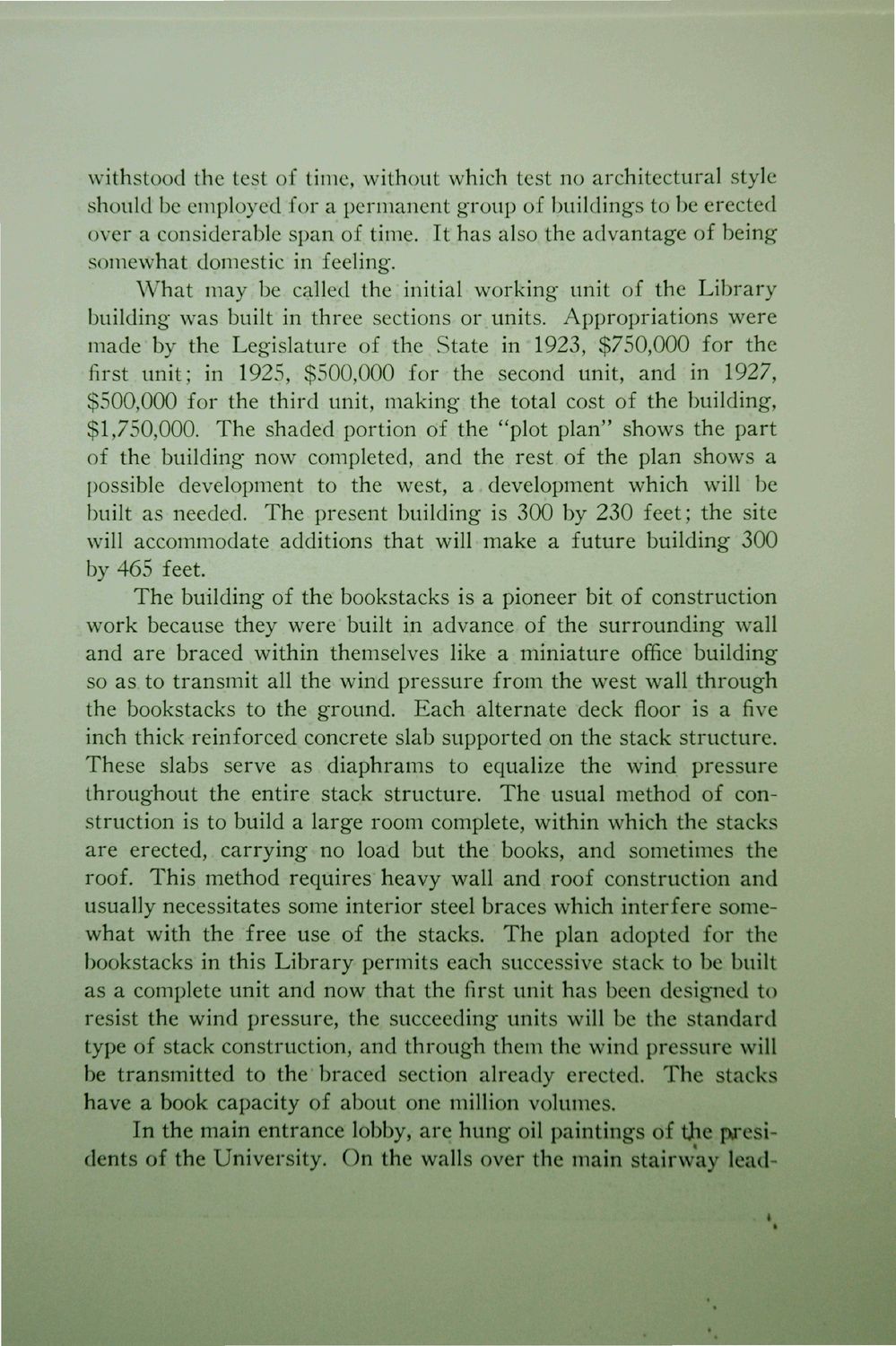| |
| |
Caption: Dedication - Library
This is a reduced-resolution page image for fast online browsing.

EXTRACTED TEXT FROM PAGE:
withstood the test of time, without which test no architectural style should be employed/for a permanent group of buildings to be erected over a considerable span of time. It has also the advantage of being somewhat domestic in feeling. What may be called the initial working unit of the Library building was built in three sections or units. Appropriations were made by the Legislature of the State in 1923, $750,000 for the first unit; in 1925, $500,000 for the second unit, and in 1927, $500,000 for the third unit, making the total cost of the building, $1,750,000. The shaded portion of the "plot plan" shows the part of the building now completed, and the rest of the plan shows a possible development to the west, a. development which will be built as needed. The present building is 300 by 230 feet; the site will accommodate additions that will make a future building 300 by 465 feet. The building of the bookstacks is a pioneer bit of construction work because they were built in advance of the surrounding wall and are braced within themselves like a miniature office building so as to transmit all the wind pressure from the west wall through the bookstacks to the ground. Each alternate deck floor is a five inch thick reinforced concrete slab supported on the stack structure. These slabs serve as diaphrams to equalize the wind pressure throughout the entire stack structure. The usual method of construction is to build a large room complete, within which the stacks are erected, carrying no load but the books, and sometimes the roof. This method requires heavy wall and roof construction and usually necessitates some interior steel braces which interfere somewhat with the free use of the stacks. The plan adopted for the bookstacks in this Library permits each successive stack to be built as a complete unit and now that the first unit has been designed to resist the wind pressure, the succeeding units will be the standard type of stack construction, and through them the wind pressure will be transmitted to the braced section already erected. The stacks have a book capacity of about one million volumes. In the main entrance lobby, are hung oil paintings of tjie presidents of the University. On the walls over the main stairway lead-
| |